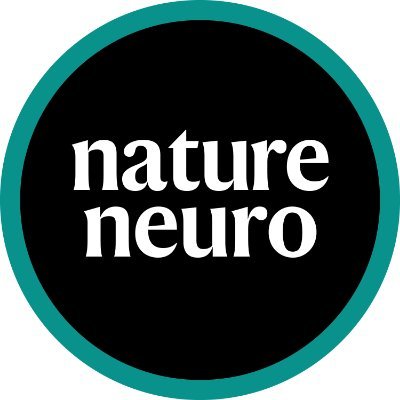
Paul Tesar
@TesarLab
Followers
2K
Following
969
Media
95
Statuses
1K
GirlDad | Professor @CWRUSOM developing glial therapies for neuro diseases | DPhil @UniofOxford @NIHOxCam | Co-founder @convelotx | Director @riseupneo | Foodie
Cleveland, Ohio
Joined August 2011
So cool to see our recent paper on environmental chemicals affecting brain health on the cover of Nature Neuroscience! Congrats again to @ErinFCohn and the team. Special thanks to Ella Maru Studio @Ella_Maru for the artwork
0
9
66
Excited to share this excellent article by Teddy Amenabar @TeddyAmen in The Washingotn Post @washingtonpost. It provides a clear & balanced look at our recent discovery of a class of household chemicals that are harmful to the brain's myelinating cells. https://t.co/magFiqBIRg
washingtonpost.com
A common ingredient in household disinfectants called ‘quats’ may kill some brain cells, according to new research.
0
0
1
Proud to see work from our lab making its way to patients. I am hopeful that the investigational drug, ION356, being tested by Ionis will be found to be both safe & effective in people with Pelizaeus Merzbacher disease🙏 Link to our 2020 @Nature paper: https://t.co/iWEjq3SAmp
nature.com
Nature - In a mouse model of the leukodystrophy Pelizaeus–Merzbacher disease, myelination, motor performance, respiratory function and lifespan are improved by suppressing proteolipid protein...
0
2
20
Chemicals Found In Popular Household Products Potentially Linked To Autism, Multiple Sclerosis, Study Suggests https://t.co/ZHlpxsATNh
9
6
20
Thank you @EricTopol for highlighting our paper. An open access link to the full article is here: https://t.co/FCF3h75f6h
New and worrisome: common household chemicals can directly harm oligodendrocytes, brain health https://t.co/uaCGeP5aGg
@NatureNeuro @TesarLab @CWRUSOM Quarternary ammonium compounds (disinfectants) and organophosphate flame retardants implicated from organoids and expt'l models
4
35
96
MS and autism among brain health risks from common household chemicals https://t.co/37zQXIA7le
newsweek.com
Children are particularly vulnerable to these chemicals, the researchers warned.
4
3
5
I am also grateful to our supporters, including the @NIH_NINDS, @mssociety, @HHMINEWS, @nyscf, sTF5 Care, and the Long, Walter, Peterson, Goodman, and Geller families.
1
0
1
Thank you to the entire team including Ben Clayton @bllclayton, Mayur Madhavan @MayurMadhavan, Kristin Lee, Sara Yacoub, Yuriy Fedorov, Marissa Scavuzzo @marissascavuzzo, at @CWRUSOM & Tim Shafer and Katie Paul Friedman at the U.S. Environmental Protection Agency.
1
0
1
Future studies need to identify clearer links between exposure to these chemicals and brain health. Some of these chemicals have useful roles in our homes, but we need to consider what level of exposure is considered safe for ourselves and our kids (and pets 🐕).
1
1
2
Our goal is not to raise alarm bells or suggest that we completely remove these chemicals from our homes.
1
0
1
We also linked high exposure levels of these chemicals to developmental challenges in children, underscoring the need for deeper understanding and action.
1
1
0
Laboratory experiments with cellular and human brain organoid models, alongside developmental studies in mice, demonstrated the specific vulnerability of oligodendrocytes to these chemicals.
1
1
1
Our team analyzed over 1,800 environmental chemicals, uncovering that quaternary ammonium compounds (found in personal care products and disinfectants) and organophosphate flame retardants (in electronics and furniture) are particularly harmful to oligodendrocytes.
1
1
2
Our research, published in @NatureNeuro, focuses on the impact of common environmental chemicals on oligodendrocytes. These cells are crucial for brain function, insulating nerve cells. Our findings point to environmental factors as potential contributors to neurological diseases
1
1
0
Common household chemicals pose a risk to the brain’s myelinating cells Thrilled to share groundbreaking findings from our latest study led by @ErinFCohn at @CWRUSOM's Institute for Glial Sciences, in collaboration with the U.S. @EPA. https://t.co/9gxhHu2d3y
1
23
65
Great work by @bllclayton, @TesarLab, & the team. Such an insightful dive into modulation of astrocyte reactivity. @ScienceLemon92 and I were honored to write the @NatureNeuro N&V on this piece - see https://t.co/v9Mo4dDGFF. (1/2)
Excited to share that my first postdoc publication is officially out! Combining an astrocyte cellular platform and chemical screening we identified drugs that can suppress the formation of pathological astrocytes and promote neuroprotection. https://t.co/YRnYWkrA8u
0
11
53
A phenotypic screening platform for identifying chemical modulators of #astrocyte reactivity reveals histone deacetylase 3 (HDAC3) inhibitors as suppressors of pathological astrocyte reactivity @TesarLab @bllclayton
https://t.co/obcMFZT0Jq
0
6
27









